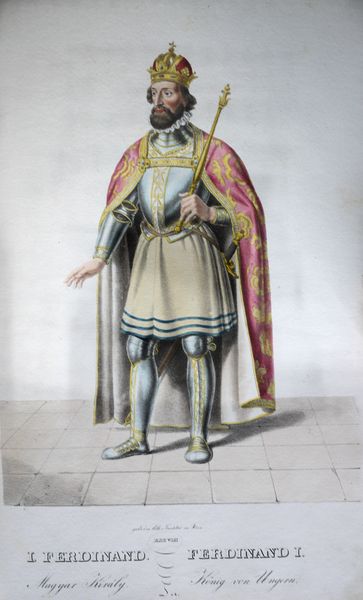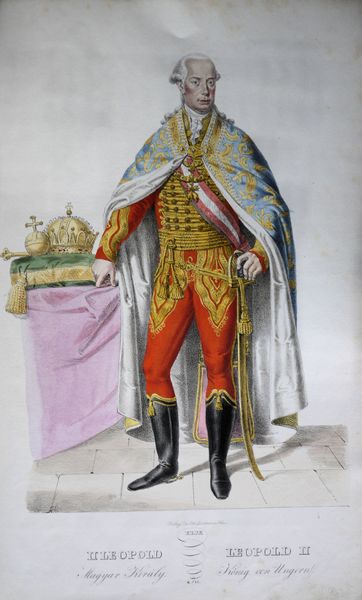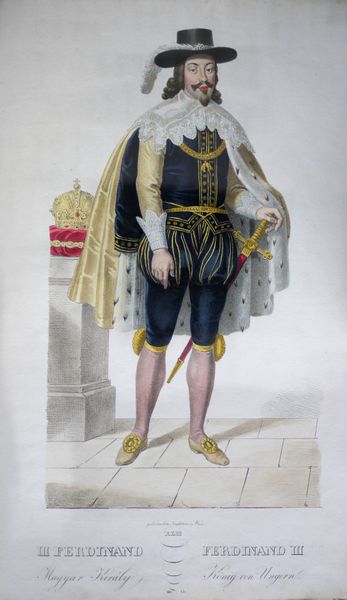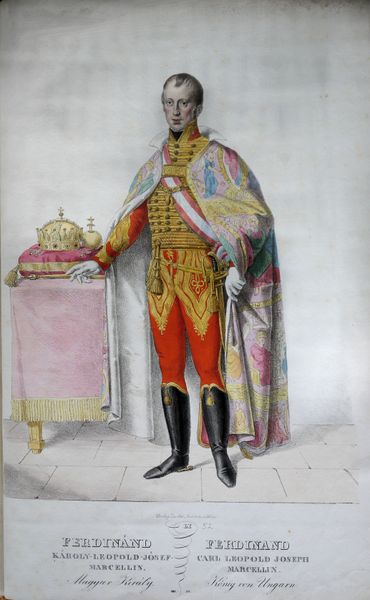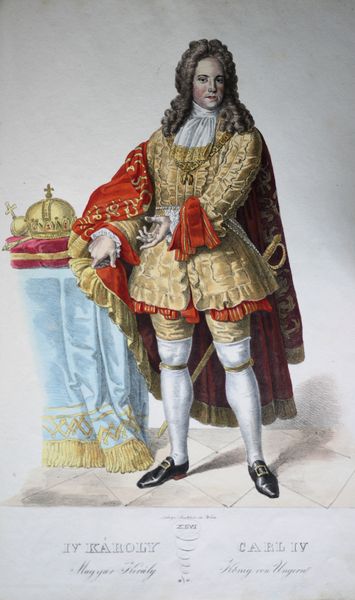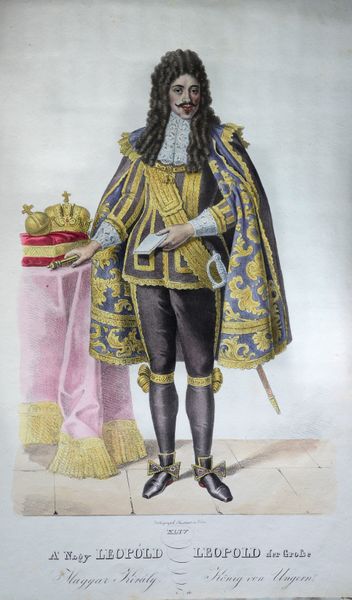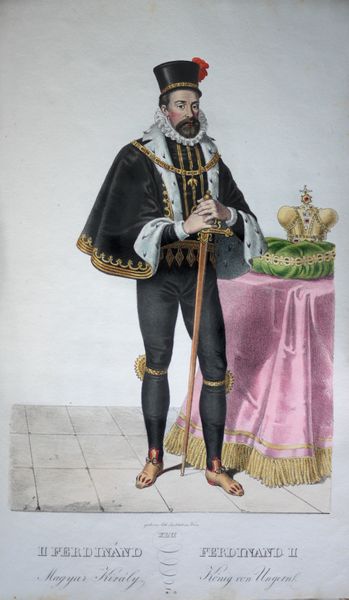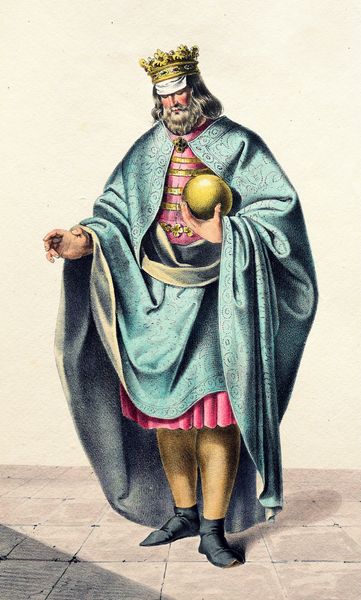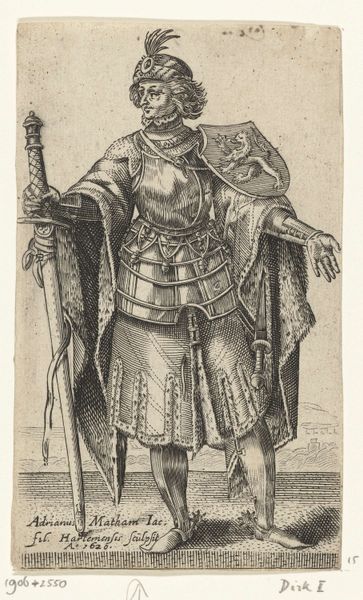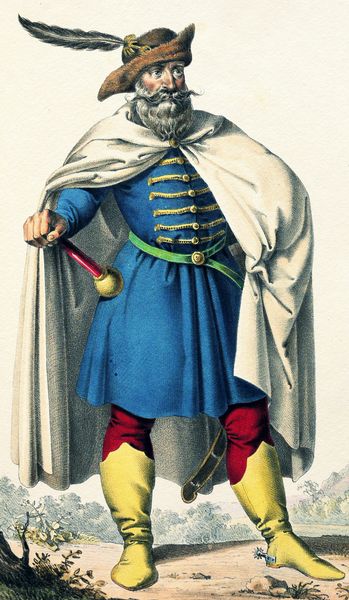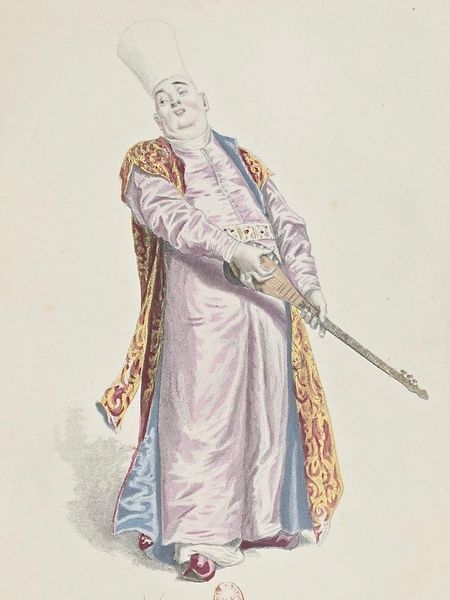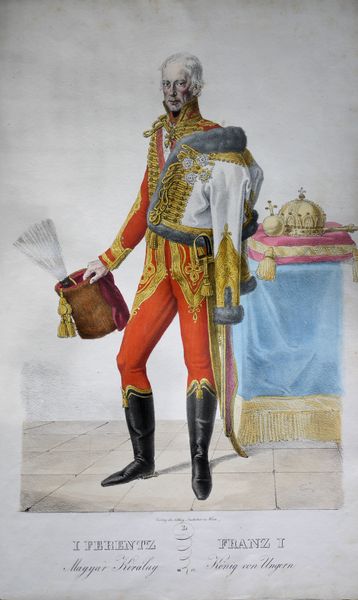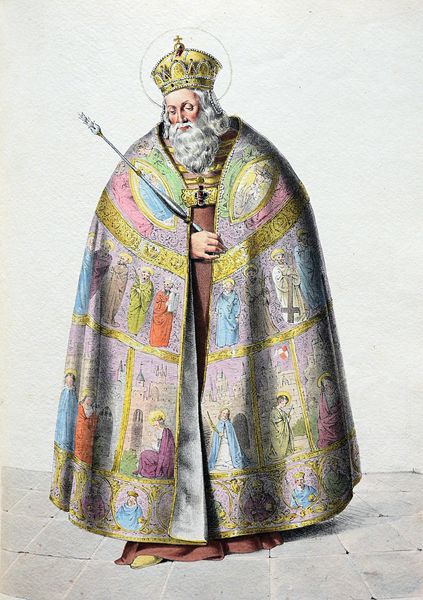
drawing, print
#
portrait
#
drawing
# print
#
oil painting
#
portrait drawing
#
history-painting
#
academic-art
#
portrait art
#
fine art portrait
Copyright: Public domain
Curator: Here we see a print depicting Rudolf II by Josef Kriehuber. It appears to be an academic rendering, probably produced to celebrate Rudolf's status. Editor: My initial reaction is how oddly muted the colors feel, considering this is supposed to be royalty! The lilac skirt-like garment under the armor... It feels like an awkward visual choice. Curator: That’s interesting, considering the conventions of representation during that time. It likely wasn't seen as awkward at all, but as part of a very specific language of power. Rudolf II was a Holy Roman Emperor known for his patronage of the arts and sciences; the image likely functions as propaganda portraying him in an ideal form. His importance seems further emphasized by the crown on the table and the scepter in his hand. Editor: I agree, but it's still striking how the artist chose to portray him with, let’s say, less traditionally “masculine” colors and garments than one might expect. Look closely at the soft folds of his cape versus the hardness of the metallic elements. It is a real interplay of textures and densities. Curator: True, and it probably reflected contemporary fashion to an extent. Also, remember Rudolf's reign was marked by increasing tensions between Catholics and Protestants. Kriehuber would’ve aimed to carefully manage Rudolph’s image during a sensitive socio-political climate. The clothing is likely an emblem for these specific conditions. Editor: Do you think there’s also an attempt to convey some level of gentleness? I keep coming back to that contrast. The rendering is highly detailed yet somewhat subdued in its impact. I find that visual tension fascinating! Curator: I can see your point. The academic art style definitely plays a role. In my reading, though, the artist intended to reinforce an idea of stability by showing both Rudolf’s strength, which comes through the symbol of armor and military regalia, and an indication of sophisticated diplomacy. Editor: Fascinating. So, we each walk away with a different reading anchored by social versus aesthetic observations. Art never stops teaching! Curator: Indeed. This work invites us to consider not just who Rudolf II was but what he represented at a critical moment in European history.
Comments
No comments
Be the first to comment and join the conversation on the ultimate creative platform.

